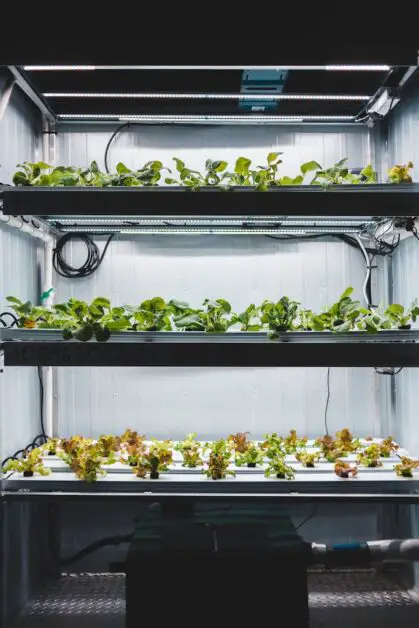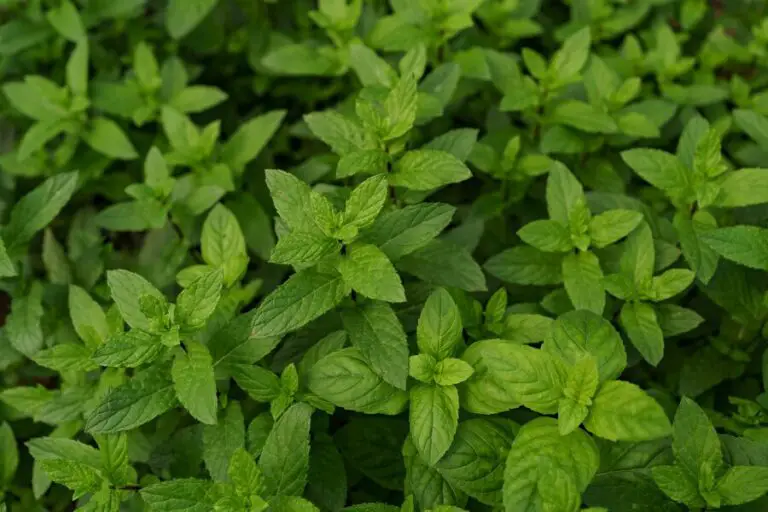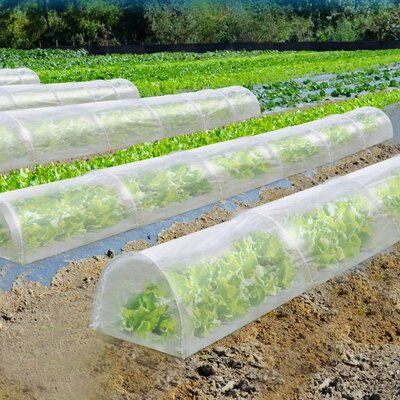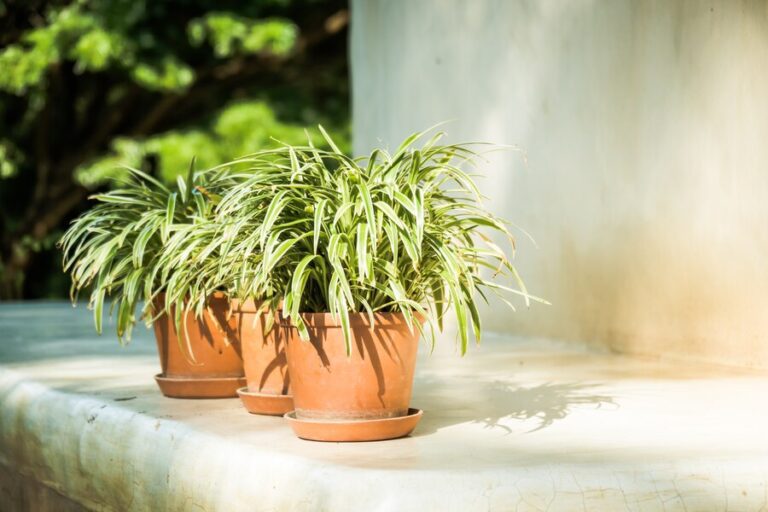LED vs HPS: Which Grow Light is More Fitting for Your Plants?
Table of Contents
Benefits of LED grow lights for plant growth
LED grow lights have revolutionized indoor gardening by offering numerous benefits for plant growth. One of the key advantages of LED grow lights is their energy efficiency. They consume significantly less electricity compared to other types of grow lights, such as HPS or fluorescent lights. This not only helps reduce energy costs but also minimizes the ecological footprint of indoor gardening.
In addition to energy efficiency, LED grow lights provide plants with the precise light spectrum they need for optimal growth. These lights can be customized to emit specific wavelengths of light, allowing gardeners to tailor the lighting conditions to the specific needs of different plant species. This targeted spectrum helps plants photosynthesize more effectively, resulting in faster and healthier growth. Furthermore, LED grow lights produce much less heat than traditional grow lights, reducing the risk of heat damage to plants and providing a more comfortable environment for indoor gardening.
Overall, LED grow lights offer a range of benefits for plant growth and are increasingly preferred by gardening enthusiasts and commercial growers alike. From their energy efficiency and customizable light spectrum to their lower heat emissions, LED grow lights provide an excellent solution for indoor gardens seeking optimal plant growth.
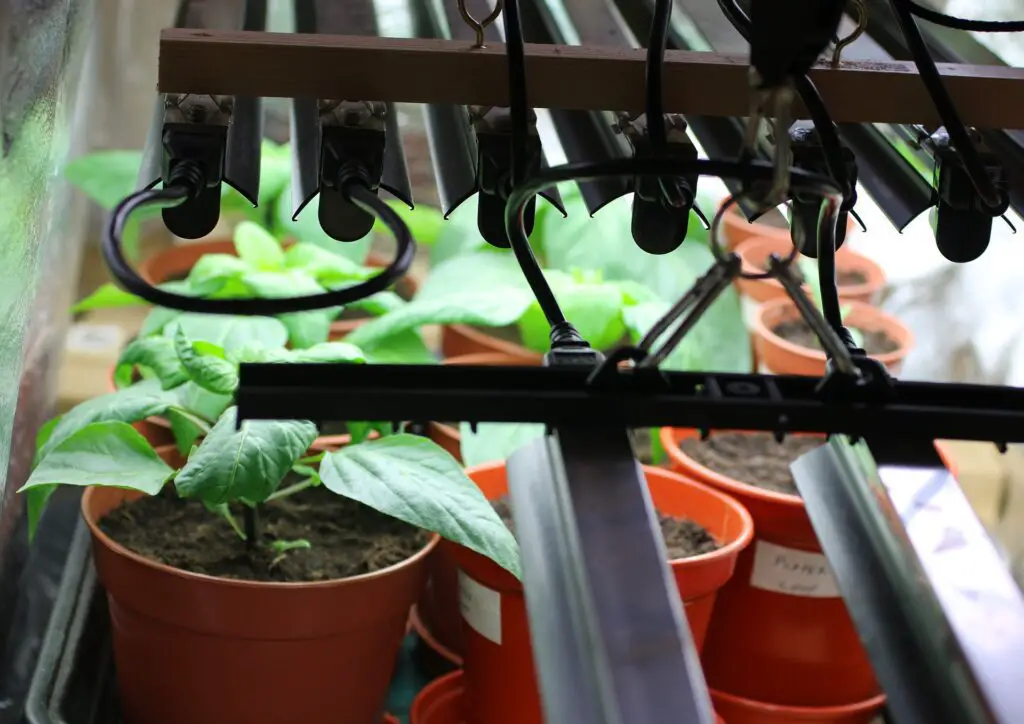
Advantages of HPS grow lights for plant cultivation
HPS grow lights have long been favored by plant cultivators for their ability to provide ample amounts of light that plants need for healthy growth. One of the key advantages of HPS grow lights is their high light intensity, which allows them to penetrate deep into the plant canopy and reach even the lower leaves. This ensures that all parts of the plant receive sufficient light for photosynthesis, leading to well-developed and robust plants.
Additionally, HPS grow lights emit a warm spectrum of light that closely resembles natural sunlight, making them ideal for promoting the flowering and fruiting stages of plant growth. The red and orange wavelengths emitted by HPS lights stimulate the production of hormones responsible for flower and fruit development. This is particularly beneficial for plants that require a specific light spectrum to initiate flowering, such as tomatoes or peppers. With HPS grow lights, gardeners can achieve impressive yields and bountiful harvests.
| Advantage | Description |
|---|---|
| High Photosynthetic Efficiency | HPS grow lights emit light in the red and orange spectrum, which is optimal for photosynthesis, promoting robust growth. |
| Cost-Effective | HPS lights are relatively affordable compared to some other types of grow lights, making them accessible to growers. |
| High Light Output | HPS bulbs produce a high-intensity light, providing sufficient brightness for plants, especially during the flowering stage. |
| Long Lifespan | HPS bulbs have a longer lifespan compared to some other types of grow lights, reducing the frequency of replacements. |
| Suitable for Flowering Stage | HPS lights are particularly effective during the flowering stage due to their spectrum, promoting flowering and fruiting. |
| Widely Available | HPS grow lights are readily available in the market, with various brands and models to choose from for different setups. |
| Reliable Technology | HPS technology has been well-established and widely used in indoor gardening and commercial cultivation for decades. |
| High Energy Efficiency | While not as energy-efficient as some newer technologies like LEDs, HPS lights still offer relatively high energy efficiency. |
Differences in energy efficiency between LED and HPS grow lights
LED and HPS grow lights are widely used in indoor gardening to provide the necessary light for plant growth. One key difference between these two types of grow lights is their energy efficiency. LED lights are known for their high energy efficiency, making them a popular choice among gardening enthusiasts. In fact, LED lights are up to 80% more energy efficient than HPS lights, which means that they consume less electricity while producing the same amount of light.
The energy efficiency of LED grow lights can be attributed to their unique design and technology. Unlike HPS lights, which emit light by passing an electrical current through a gas-filled chamber, LED lights use small diodes that emit light when an electrical current is applied. This direct conversion of electricity to light reduces energy waste and heat production, making LED lights more efficient in converting energy into usable light for plants. As a result, gardeners using LED grow lights can save on electricity costs and reduce their environmental footprint.
Impact of LED and HPS grow lights on plant yield
LED and HPS grow lights have a significant impact on the yield of plants in indoor gardens. These two types of lighting systems provide the necessary light energy for photosynthesis, which is essential for plant growth and productivity. Both LED and HPS lights emit the crucial wavelengths required by plants for various stages of their development, such as vegetative growth, flowering, and fruiting.
LED grow lights are known for their efficiency in converting electrical energy into light energy, making them highly effective in promoting plant growth. Their focused and directional light output ensures that plants receive optimal illumination, allowing for maximum photosynthetic activity. LED lights also have adjustable brightness and spectrums, enabling gardeners to tailor the light conditions to specific plant species or growth stages.
On the other hand, HPS grow lights have long been favored by many indoor gardeners for their ability to promote abundant flowering and fruiting. They emit a broad spectrum of light that closely resembles natural sunlight, which stimulates the reproductive processes in plants. This makes HPS lights particularly suitable for crops that heavily rely on flowering and fruiting, such as tomatoes or peppers.
In conclusion, both LED and HPS grow lights play a vital role in increasing plant yield in indoor gardens. LED lights excel in their energy efficiency and flexibility, while HPS lights are renowned for their capability to enhance flowering and fruiting. Understanding the specific light requirements of different plant species and growth stages can help gardeners choose the most suitable lighting system to optimize plant yield.
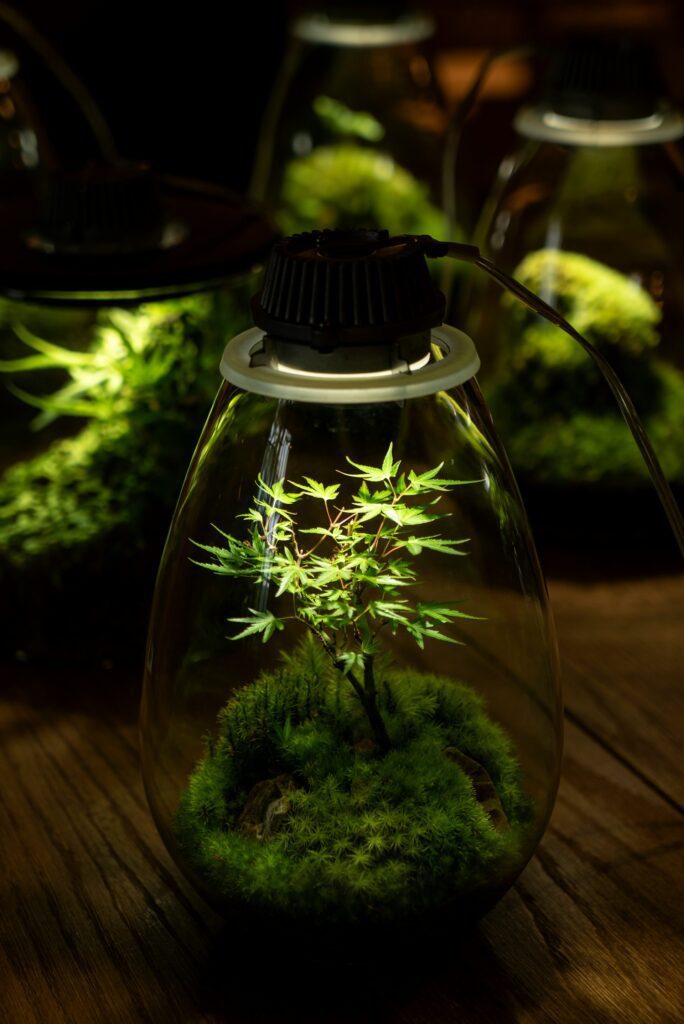
Suitability of LED grow lights for specific plant species
For gardening enthusiasts seeking to grow specific plant species indoors, LED grow lights have proven to be a highly suitable option. LED lights offer a customizable spectrum of light that can be tailored to meet the specific needs of different plants at each stage of their growth cycle. Unlike traditional lighting methods, LED grow lights emit very little heat, reducing the risk of plant damage from excessive temperatures. This allows growers to position the lights closer to the plants without causing harm, resulting in better light penetration and more efficient photosynthesis.
LED grow lights are particularly well-suited for plants that require specific light conditions, such as herbs, leafy greens, and certain flowering plants. These lights provide the necessary wavelengths needed by plants for photosynthesis, promoting healthy growth and development. Additionally, the adjustable light spectrum of LED lights allows for the manipulation of plant characteristics, such as influencing the size, taste, and aroma of produce. Whether you’re looking to cultivate a vibrant herb garden or achieve optimal growth for your favorite flowers, LED grow lights offer a reliable and efficient solution for meeting the specific lighting requirements of different plant species.
Effectiveness of HPS grow lights in promoting flowering and fruiting
In the world of indoor gardening, the effectiveness of High-Pressure Sodium (HPS) grow lights in promoting flowering and fruiting is widely recognized. HPS grow lights emit a warm, yellow-orange light that closely mimics the color spectrum of natural sunlight during the fall season. This specific color temperature is essential for triggering the flowering and fruiting phase in many plants.
The intense output of red and yellow wavelengths emitted by HPS grow lights stimulates the production of hormones necessary for the reproductive growth of plants. Research has shown that these lights can significantly increase the number and size of flowers and fruits. In fact, some studies have reported up to a 25% increase in yields when using HPS grow lights compared to other types of lighting systems.
Moreover, HPS grow lights have a high photosynthetic photon flux density (PPFD), which measures the amount of light energy available for photosynthesis. This high PPFD allows plants to efficiently convert light into energy, supporting robust growth during the flowering and fruiting stages. Additionally, HPS grow lights emit a substantial amount of radiant heat, which can create a warmer microclimate around the plants, further enhancing their flowering and fruiting potential.
Overall, the effectiveness of HPS grow lights in promoting flowering and fruiting in indoor gardens has been widely documented. However, it is crucial to consider the specific light requirements of different plant species to maximize their growth and yield potential. Let’s delve deeper into the suitability of LED grow lights for specific plant species, a topic that can help gardeners make informed decisions about their indoor gardening endeavors.
• HPS grow lights emit a warm, yellow-orange light that closely mimics the color spectrum of natural sunlight during the fall season.
• The specific color temperature of HPS grow lights is essential for triggering the flowering and fruiting phase in many plants.
• The intense output of red and yellow wavelengths emitted by HPS grow lights stimulates the production of hormones necessary for reproductive growth.
• Research has shown that HPS grow lights can significantly increase the number and size of flowers and fruits, with some studies reporting up to a 25% increase in yields compared to other lighting systems.
• HPS grow lights have a high photosynthetic photon flux density (PPFD), which allows plants to efficiently convert light into energy, supporting robust growth during flowering and fruiting stages.
• The radiant heat emitted by HPS grow lights creates a warmer microclimate around plants, further enhancing their flowering and fruiting potential.
• It is crucial to consider the specific light requirements of different plant species when using HPS grow lights to maximize growth and yield potential.
| Aspect | Effectiveness of HPS Grow Lights |
|---|---|
| Light Spectrum | HPS lights emit light primarily in the red and orange spectrum, which promotes flowering and fruiting in plants. These wavelengths are essential for triggering the flowering response and promoting fruit development. |
| Photosynthetic Efficiency | HPS lights have high photosynthetic efficiency in the red spectrum, which enhances photosynthesis during the flowering and fruiting stages. Plants utilize red light for energy production and carbohydrate synthesis, crucial processes during flowering and fruiting. |
| Penetration | HPS lights penetrate deep into the canopy, ensuring that lower leaves and flowers receive sufficient light intensity. This penetration is important for promoting uniform flowering and fruiting throughout the plant canopy. |
| Heat Generation | HPS lights produce significant amounts of heat compared to other lighting options, which can be beneficial during flowering and fruiting stages when plants may benefit from slightly higher temperatures. However, excessive heat production may require additional ventilation and cooling measures to prevent heat stress. |
| Energy Efficiency | While HPS lights are effective for promoting flowering and fruiting, they are less energy-efficient compared to newer LED (Light Emitting Diode) grow lights. However, advancements in HPS technology have led to more energy-efficient options with improved light output per watt. |
| Cost | HPS lights are relatively affordable compared to some other lighting options, making them a popular choice among growers for promoting flowering and fruiting in plants. However, the initial cost of setting up an HPS lighting system may be higher compared to traditional fluorescent lighting but lower than some LED options. |
Considerations for choosing the right grow light for your indoor garden
When it comes to choosing the right grow light for your indoor garden, there are several important considerations to keep in mind. First and foremost, you’ll want to consider the specific needs of the plants you’ll be cultivating. Different plants have different light requirements, so it’s essential to choose a grow light that provides the optimal spectrum and intensity for their growth.
In addition to considering the light requirements of your plants, you’ll also want to think about the size of your indoor garden and the space you have available. Some grow lights are designed for small-scale gardening, while others are more suitable for larger operations. It’s important to choose a grow light that fits the size of your garden and provides adequate coverage for all of your plants.
Comparison of the lifespan of LED and HPS grow lights
LED grow lights and HPS grow lights are two popular options for indoor gardening. When comparing the lifespan of these two types of lights, it’s important to consider the longevity of each and the cost implications associated with replacement. LED grow lights have a significantly longer lifespan compared to HPS grow lights.
LED grow lights can last up to 50,000 to 100,000 hours, depending on the quality and brand. This lifespan translates to several years of continuous use. On the other hand, HPS grow lights typically have a lifespan of around 10,000 to 20,000 hours. This means that LED grow lights can last up to five times longer than HPS grow lights. This increased lifespan of LED grow lights not only saves money in the long term but also reduces the hassle of frequent replacements.
The extended lifespan of LED grow lights is due to their efficient design and technology. LEDs are semiconductor devices that produce light when an electrical current passes through them. They do not rely on filaments or gases, which are prone to degradation and failure over time. This inherent durability makes LED grow lights a reliable and long-lasting option for indoor gardeners.
In conclusion, when considering the lifespan of LED and HPS grow lights, LED grow lights clearly outshine their HPS counterparts. With a significantly longer lifespan, LED grow lights offer gardeners a cost-effective and reliable lighting solution for their indoor gardens.
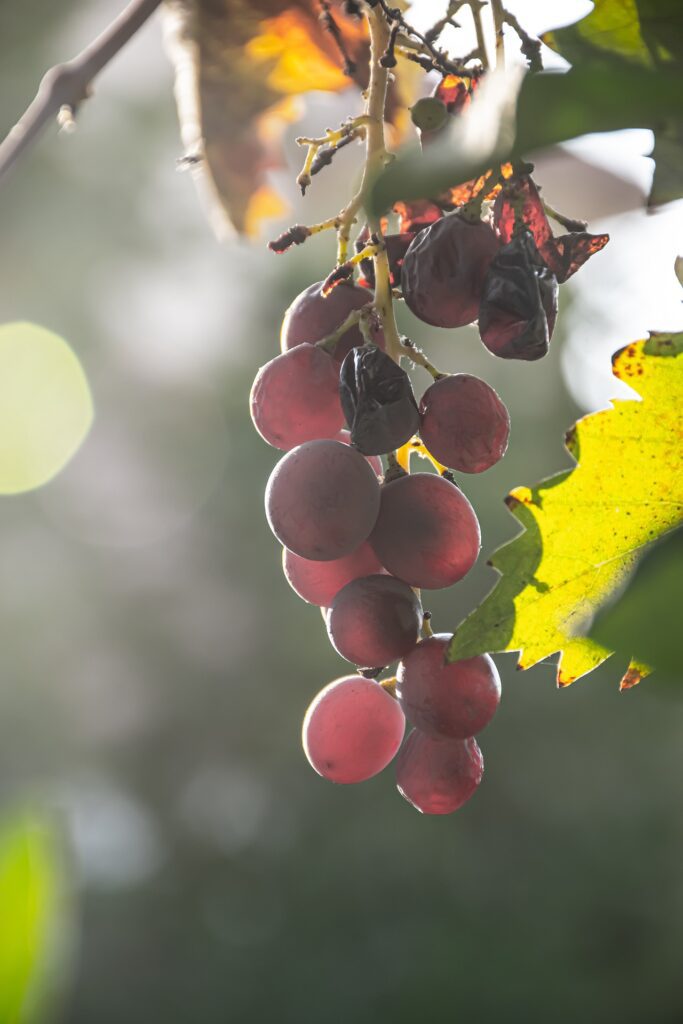
Discussion on the heat generated by LED and HPS grow lights
LED and HPS grow lights are essential tools for indoor gardening enthusiasts, providing the necessary light spectrum for optimal plant growth. However, one important consideration when choosing between these two types of grow lights is the heat they generate. LED grow lights are known for their energy efficiency, as they produce significantly less heat compared to HPS grow lights.
The heat generated by HPS grow lights can be a concern, particularly in enclosed spaces. These lights emit a considerable amount of heat, requiring adequate ventilation and cooling systems to maintain ideal growing conditions. In contrast, LED grow lights produce minimal heat, making them an ideal choice for small indoor gardens or spaces where temperature control is a primary concern.
The heat generated by grow lights can impact plants in various ways. Excessive heat can lead to stress on plant tissues, potentially causing stunted growth, wilting, or even damage to essential structures like leaves or flowers. Moreover, high temperatures can also increase the risk of disease and pest infestations, as some pathogens thrive in warmer environments. By choosing LED grow lights, gardeners can mitigate these risks and ensure a more stable and controlled growing environment for their plants.
Exploration of the cost implications of LED and HPS grow lights
LED and HPS grow lights offer different cost implications when it comes to indoor gardening. LED grow lights are known for their energy efficiency, making them a cost-effective option in the long run. Compared to HPS grow lights, LEDs consume significantly less electricity while still providing the necessary light spectrum for plant growth. This not only reduces electricity bills but also contributes to sustainability efforts by minimizing energy usage.
On the other hand, HPS grow lights may have a lower upfront cost compared to LEDs. However, they have higher energy consumption and shorter lifespans, which can result in higher recurring costs over time. Replacement bulbs and frequent maintenance can add up, making HPS grow lights less economical in the long term. Gardeners with a limited budget should consider the total cost of ownership, including maintenance and energy expenses, to determine which type of grow light best suits their needs and financial situation.
It is worth noting that the cost implications of LED and HPS grow lights can vary depending on factors such as the size of the indoor garden, the specific plant species being cultivated, and the desired level of yields. Evaluating the cost benefits of each option is crucial to optimize resource allocation and achieve the best results in indoor gardening projects.
Evaluation of the light spectrum provided by LED and HPS grow lights
LED and HPS grow lights provide different light spectra that have varying effects on plant growth and development. LED grow lights emit a narrow spectrum of light, typically focused on specific wavelengths that plants absorb most efficiently for photosynthesis. This targeted light spectrum allows for better control and manipulation of plant growth, as specific wavelengths can be adjusted to promote certain physiological processes such as vegetative growth or flowering. On the other hand, HPS grow lights emit a broad spectrum of light that includes a wider range of wavelengths. While this may not provide as precise control as LED grow lights, the broad spectrum of HPS lights can still support overall plant growth and yield.
The light spectrum provided by LED grow lights can be customized to suit specific plant species and growth stages. By adjusting the ratio of different wavelengths, gardeners can tailor the light spectrum to meet the specific needs of their plants. For instance, blue light (around 400-500 nm) promotes vegetative growth and is ideal for seedlings and leafy greens, while red light (around 600-700 nm) stimulates flowering and fruiting and is crucial for crops like tomatoes and strawberries. LED grow lights also have the advantage of being able to emit other beneficial wavelengths, such as ultraviolet (UV) and infrared (IR) light. UV light, in appropriate doses, can enhance plant resilience and production of secondary metabolites, while IR light can improve plant metabolism and stress tolerance. Overall, the ability to fine-tune the light spectrum makes LED grow lights a valuable tool for maximizing plant growth and productivity.
Analysis of the environmental impact of LED and HPS grow lights
The environmental impact of LED and HPS grow lights is an important consideration for indoor gardeners. Both types of lighting technologies have advantages and disadvantages when it comes to their impact on the environment.
LED grow lights are known for their energy efficiency, consuming significantly less electricity compared to HPS grow lights. This translates into lower greenhouse gas emissions and reduced dependence on fossil fuels for electricity generation. Additionally, due to their long lifespan, LED grow lights require less frequent replacement, resulting in less waste being generated. Overall, LED grow lights offer a more sustainable solution for indoor gardening, helping to minimize the environmental footprint.
On the other hand, HPS grow lights have a higher energy consumption compared to LED lights. This higher energy usage can contribute to increased greenhouse gas emissions and energy consumption from the power grid. However, it is worth noting that HPS grow lights can be more affordable upfront, and their effectiveness in promoting flowering and fruiting in plants may make them a preferred choice for certain indoor gardens.
In conclusion, when considering the environmental impact of LED and HPS grow lights, it is clear that LED lights offer a more sustainable and energy-efficient option. However, the choice ultimately depends on individual preferences, budget constraints, and specific plant requirements. By carefully evaluating the environmental implications, gardeners can make informed decisions to create a greener and more environmentally friendly indoor gardening environment.
Exploration of the potential health benefits and risks associated with LED and HPS grow lights
LED and HPS grow lights have gained popularity among indoor gardening enthusiasts for their ability to provide the necessary light spectrum for plant growth. However, it is important to consider the potential health benefits and risks associated with these types of lights.
One potential health benefit of LED grow lights is their energy efficiency and low heat output. Unlike HPS grow lights, LEDs emit very little heat, reducing the risk of plant dehydration and heat stress. Additionally, LEDs consume less energy compared to HPS lights, resulting in lower electricity bills and reduced carbon footprint. This makes LED grow lights a more sustainable option for indoor gardening.
On the other hand, there are some potential risks associated with both LED and HPS grow lights. Both types of lights emit blue light, which has been linked to the disruption of circadian rhythms and the suppression of melatonin production in humans. This can potentially affect sleep patterns and overall health. Additionally, exposure to high-intensity light for extended periods may cause eye strain or damage.
Considering these potential health benefits and risks, it is important for indoor gardeners to strike a balance between providing optimal light conditions for plant growth and ensuring their own well-being. Implementing light timers, using protective eyewear, and providing proper ventilation can help mitigate some of these risks. As with any gardening practice, it is always recommended to consult with experts and stay updated on the latest research findings to make informed decisions.
Are LED grow lights more energy efficient than HPS grow lights?
Yes, LED grow lights are generally more energy efficient than HPS grow lights. They consume less electricity while producing the same amount of light, resulting in lower energy costs.
Can LED grow lights promote better flowering and fruiting in plants?
LED grow lights can effectively promote flowering and fruiting in plants. They can be customized to provide specific light wavelengths that stimulate the reproductive processes of plants, leading to better flowering and fruit development.
Which plant species are most suitable for LED grow lights?
LED grow lights are suitable for a wide range of plant species, including leafy greens, herbs, and flowering plants. They can be adjusted to provide the ideal light spectrum and intensity required for the specific needs of different plants.
How long do LED grow lights last compared to HPS grow lights?
LED grow lights have a significantly longer lifespan compared to HPS grow lights. While HPS lights typically last for around 10,000 hours, LED lights can last for up to 50,000 hours or more, reducing the need for frequent replacements.
Do LED and HPS grow lights generate a significant amount of heat?
LED grow lights generate less heat compared to HPS grow lights. LEDs are designed to produce light without emitting excessive heat, making them more efficient and reducing the risk of heat damage to plants.
What are the cost implications of using LED and HPS grow lights?
LED grow lights have a higher upfront cost compared to HPS grow lights. However, their longer lifespan and energy efficiency can result in lower long-term operating costs, making them a cost-effective choice in the long run.
How do the light spectra provided by LED and HPS grow lights differ?
LED grow lights offer greater flexibility in providing specific light spectra tailored to the needs of plants. They can emit various wavelengths of light, including red, blue, and white, while HPS lights predominantly emit red and yellow light.
What is the environmental impact of using LED and HPS grow lights?
LED grow lights are more environmentally friendly compared to HPS grow lights. LED lights consume less energy, reducing carbon emissions. They also do not contain harmful chemicals like mercury, which is present in HPS lights.
Are there any potential health risks associated with using LED and HPS grow lights?
Both LED and HPS grow lights are generally considered safe for use. However, prolonged exposure to bright grow lights can cause eye strain or discomfort. It is recommended to use appropriate eye protection and follow manufacturer guidelines for safe usage.

Ankit Garg is a seasoned writer at South El Monte Hydroponics, blending his passion for agriculture with a penchant for storytelling. With a degree in Agricultural Sciences from a prestigious institution, Ankit’s expertise lies in hydroponics, sustainable farming, and innovative cultivation techniques. His keen interest in exploring the intersection of technology and agriculture has led him to delve deep into the realm of hydroponic farming, where he thrives in uncovering the latest advancements and sharing insights through his engaging prose. Ankit’s dedication to promoting eco-friendly and efficient farming practices through his writing has earned him recognition within the agricultural community and beyond.

